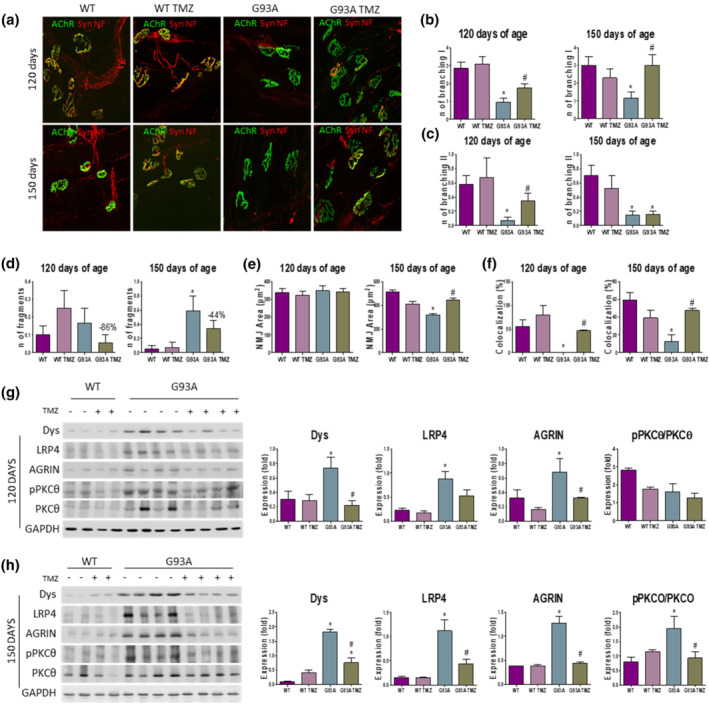FIGURE 4.

Trimetazidine (TMZ) preserves the integrity of neuromuscular junctions (NMJs). (a) Representative maximum projection images of EDL NMJs from 120‐ and 150‐day old wild‐type and SOD1G93A mice untreated (WT and G93A) and treated with TMZ (WT TMZ and G93A TMZ), stained with synaptophysin (Syn), α‐bungarotoxin (nACh receptor), and Neurofilament (NF). (b–f) Quantitation of NMJ morphometry in EDL muscles of WT, WT TMZ, G93A and G93A TMZ mice at 120 and 150 days of age, highlighting the number of primary (b) and secondary (c) ramifications, the number of fragments per NMJ (d), the area of the nACh receptor clusters (e) and the percentage of colocalized voxels (f). Data are presented as means ± SEM. *P < 0.05, compared with WT mice and #P < 0.05 compared to SOD1G93A mice, n ≥ 4 per group (n = 4 for WT, n = 6 for WT TMZ, G93A, G93A TMZ). The trend towards a reduced neuromuscular endplate fragmentation in TMZ treated SOD1G93A mice (d) is shown as percentage. (g and h) Representative western blots (left) and quantification (right) of Dystrophin (Dys), lipoprotein receptor‐related protein 4 (LRP4), agrin, and phosphorylated Protein Kinase C theta/Protein Kinase C theta (pPKCθ/PKCθ) protein expression in the tibialis anterior of 120‐day old (g) and 150‐day old (h) wild‐type (WT) and SOD1G93A (G93A) mice untreated (−) and treated (+) with TMZ from disease onset (70 days of age). Data are presented as means ± SEM, *P < 0.05, compared with WT mice and # P < 0.05, compared with G93A mice, n ≥ 4 per group (n = 4 for WT, n = 6 for WT TMZ, G93A, G93A TMZ). P value was obtained using parametric one‐way ANOVA with Bonferroni post hoc test
